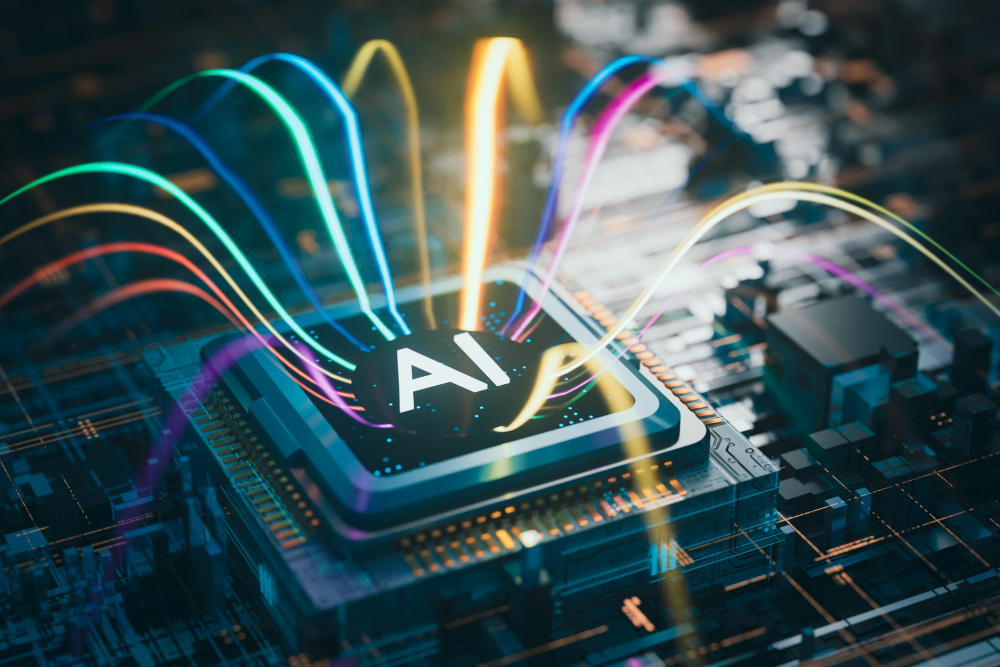True progress in Edge AI won’t be achieved by simply throwing more silicon at the problem. It will come from smarter models, energy-aware algorithms, adaptive architectures, robust memory systems, and a deep rethinking of what “intelligence at the edge” truly means. This article introduces the concept of Real-Time Edge Intelligence (RTEI) as the foundation for the next generation of computing.
Why Edge AI Matters More Than Ever
Edge AI is no longer optional. With billions of devices generating real-time data, the need for low-latency, private, and energy-efficient intelligence is undeniable. The edge is not merely an extension of cloud services; it is a new frontier for autonomy, privacy, and responsiveness.
Real-Time Edge Intelligence (RTEI) is the evolution: autonomous, adaptive intelligence operating locally where data is created. RTEI prioritizes immediacy, privacy, energy efficiency, deterministic behavior, and autonomy over mere computational brute force.
Where the Industry is Getting it Wrong
The industry is still obsessed with scaling computational power—bigger NPUs, more cores, faster memory—without fundamentally rethinking software, architecture, or intelligence models. The default AI deployment model remains cloud-heavy, treating edge inference as a scaled-down afterthought. Meanwhile, the growing “energy debt” of AI is a looming crisis. In the United States, data-centre consumption is projected to reach 12% of total electricity use by 2028. Similarly, in Europe, electricity demand from data-centres is expected to nearly triple by 2030, growing from 62 terawatt-hours (TWh) in 2022 to over 150 TWh. This would raise data-centres’ share of the EU’s total electricity consumption from approximately 2% to around 5%, largely driven by the expansion of AI workloads.
Edge AI must evolve. It must be Real-Time Edge Intelligence.
The Real Future: Smarter, Leaner, Specialized Edge Intelligence
The future belongs to compact models, made possible through better feature extraction based on scientific understanding of the processes being modeled. By leveraging domain knowledge and intelligent preprocessing, we can dramatically simplify machine learning models, reducing the need for brute-force complexity. While techniques such as TinyML, pruning, quantization, and sparsity can enhance efficiency, they alone are not sufficient to achieve true scalable, real-time edge intelligence. A deeper understanding of the underlying processes, leading to better feature extraction and model design, is critical to minimizing complexity and maximizing performance at the edge. Energy-aware AI will prioritize event-driven, minimalist computation rather than brute-force processing. Hybrid architectures will combine human-defined rule-based logic with neural networks, offering both transparency in decision-making and adaptability to complex real-world data. Devices will enable continuous, private learning without cloud dependence, while systems will be built with security-by-design at both hardware and firmware levels to ensure autonomous, trusted operation. Above all, Real-Time Edge Intelligence must serve human needs directly, not corporate agendas.
Critically, RTEI systems must ensure real-time determinism, enabling predictable and reliable decision-making even under variable load conditions. Efficient memory architectures and local memory bandwidth optimization are foundational design considerations for enabling such real-time behaviour.
Practical Technology Shifts Required
The future demands edge-optimized toolchains that simplify the journey from training to deployment, targeting energy-efficient and predictable inference. Edge-first architectures must prioritize real-world latency, energy use, and built-in security. A hybrid model of edge and cloud will allow dynamic collaboration between local and cloud resources. In the long term, neuromorphic computing—brain-inspired systems—will offer dramatic improvements in efficiency.
Toolchain maturity and developer enablement will be critical success factors. Without easy-to-use, efficient development platforms, RTEI solutions will fail to scale beyond isolated projects.
One promising hardware platform is the next-generation Arm Cortex-M processors with Helium technology. These processors integrate vector processing capabilities optimized for AI, DSP, and machine learning workloads at the edge, delivering the performance and energy efficiency needed for true RTEI applications. The combination of Helium’s SIMD capabilities with secure, deterministic real-time processing offers a practical foundation for future edge intelligence solutions.
At the same time, technical evolution must be matched with rigorous, internationally recognized standards. Regulatory bodies such as the IEC (International Electrotechnical Commission) must develop and enforce standards for AI systems, particularly at the edge, to ensure safety, reliability, security, and ethical alignment. Legislation alone is too slow to keep pace with technological change; therefore, technical standards must lead the way in setting best practices, safeguarding users, and accelerating responsible innovation.
Real Challenges to Solve
Data ownership must be protected by design, ensuring user privacy is not compromised. With increased autonomy comes a wider attack surface, so local security must be significantly strengthened—starting at the silicon level, not as an afterthought. Memory access and real-time processing requirements must be integrated from the earliest design stages. Finally, to avoid a fragmented ecosystem, open standards and interoperability must be embraced and actively developed through collaboration between industry and standards organizations.
The Future Will Not Be Cloud-Centric. It Will Be Edge-Intelligent
Real-Time Edge Intelligence is built on several core pillars. It demands contextual awareness, where intelligence is shaped by immediate environments. It emphasizes energy-conscious design, relying on minimalist, event-driven computation. Autonomous adaptation is critical, with continuous local learning and refinement. Deterministic, predictable behavior underpins trust and usability. Security must be inherent, with hardened local autonomy built into silicon, firmware, and software. Most importantly, RTEI must aim for human-centric goals, enhancing real human experiences.
RTEI is not a miniaturized cloud service, nor a bigger NPU strapped onto an old architecture. It is not a privacy patch on centralized AI or a marketing buzzword. Rather, RTEI is smarter, smaller, ethical, immediate intelligence. It is a new frontier for engineering and creativity, and a survival strategy for an energy-constrained, privacy-conscious future.
We must stop scaling hardware for its own sake and start scaling wisdom—building smarter, faster, more trusted intelligence where it matters: in real time, at the edge.
RTEI is not optional. It is inevitable.




Leave a Reply
Want to join the discussion?Feel free to contribute!